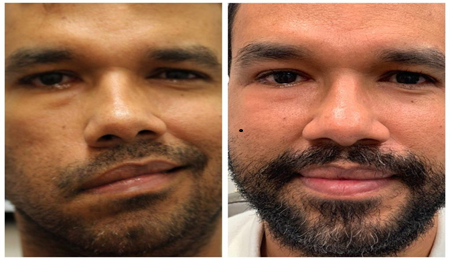Facial Nerve Reconstruction: New Techniques & Trends in 2025
Introduction
Facial nerve reconstruction is a highly specialized field of plastic and reconstructive surgery that deals with restoring movement and function to the face after nerve damage. Whether caused by trauma, tumors, or infections, facial nerve injuries can severely affect a person's ability to smile, blink, or express emotions. With advancements in microsurgery and regenerative medicine, 2025 is witnessing exciting new developments in the diagnosis and treatment of facial nerve injuries.
Understanding Facial Nerve Reconstruction

The facial nerve (cranial nerve VII) controls facial muscles, tear and saliva production, and taste sensations. Damage can cause partial or full facial paralysis.
- Facial Nerve Paralysis: Loss of facial muscle movement.
- Nerve Grafting: Bridging damaged nerve segments with donor nerves.
- Nerve Transfer: Connecting healthy nerves to restore movement.
- Muscle Transfer: Transplanting muscles to regain facial function.
Causes and Symptoms of Facial Nerve Damage
Facial nerve injuries can occur due to trauma, surgeries, infections, or neurological conditions.
- Road traffic accidents, skull fractures, deep cuts
- Surgical complications (ear, parotid, or brain surgeries)
- Bell’s palsyBell’s palsy, herpes zoster, stroke
- Symptoms: facial droop, eye/mouth closure issues, taste loss, asymmetry
Classification of Nerve Damage
- Neuropraxia: Temporary blockage; full recovery likely.
- Axonotmesis: Damage to axons; may need intervention.
- Neurotmesis: Complete severing; needs surgery.
Latest Techniques & Trends in Facial Nerve Reconstruction (2025)
| Technique / Trend | Description |
|---|---|
| Advanced Microsurgical Techniques | Supermicrosurgery for nerves & biodegradable scaffolds for minimal scarring. |
| Nerve Transfers & CFNG | Using masseter/hypoglossal nerves; Cross-Facial Nerve Grafts for symmetry. |
| Functional Muscle Transfer | Gracilis muscle transplant from thigh to restore dynamic expressions. |
| Regenerative Therapies | Stem cells, PRP, and emerging gene therapy aid nerve regeneration. |
| AI & Robotics in Surgery | AI maps anatomy; robotic arms enhance precision in nerve repair. |
Expert Insight: Dr. Vinay Jacob
Dr. Vinay Jacob, a Senior Plastic and Reconstructive Surgeon in India, has 25+ years of experience. He specializes in facial rejuvenation, nerve reconstruction, gender-affirming surgeries, and more. Visit him at 503, Sagar Fortune Building, Bandra (West), Mumbai.
FAQs on Facial Nerve Reconstruction
- Q1: Recovery time? A: 6 months to 2 years.
- Q2: Is it painful? A: Done under general anesthesia; post-op pain is manageable.
- Q3: Can all types be treated? A: Most cases see functional improvement.
- Q4: Will I regain expressions? A: With proper care, near-normal results are achievable.
- Q5: Is it safe? A: Yes, especially with expert surgeons.
- Q6: Risks? A: Infection, incomplete recovery, or scarring.
- Q7: When to consult? A: Immediately after trauma or sudden paralysis.
- Q8: Are results permanent? A: Mostly, with follow-up therapy.
Conclusion
Facial nerve reconstruction in 2025 offers renewed hope with its advanced surgical, regenerative, and AI-powered techniques. Early consultation with specialists like Dr. Vinay Jacob can make all the difference for patients looking to restore function, confidence, and facial symmetry.

